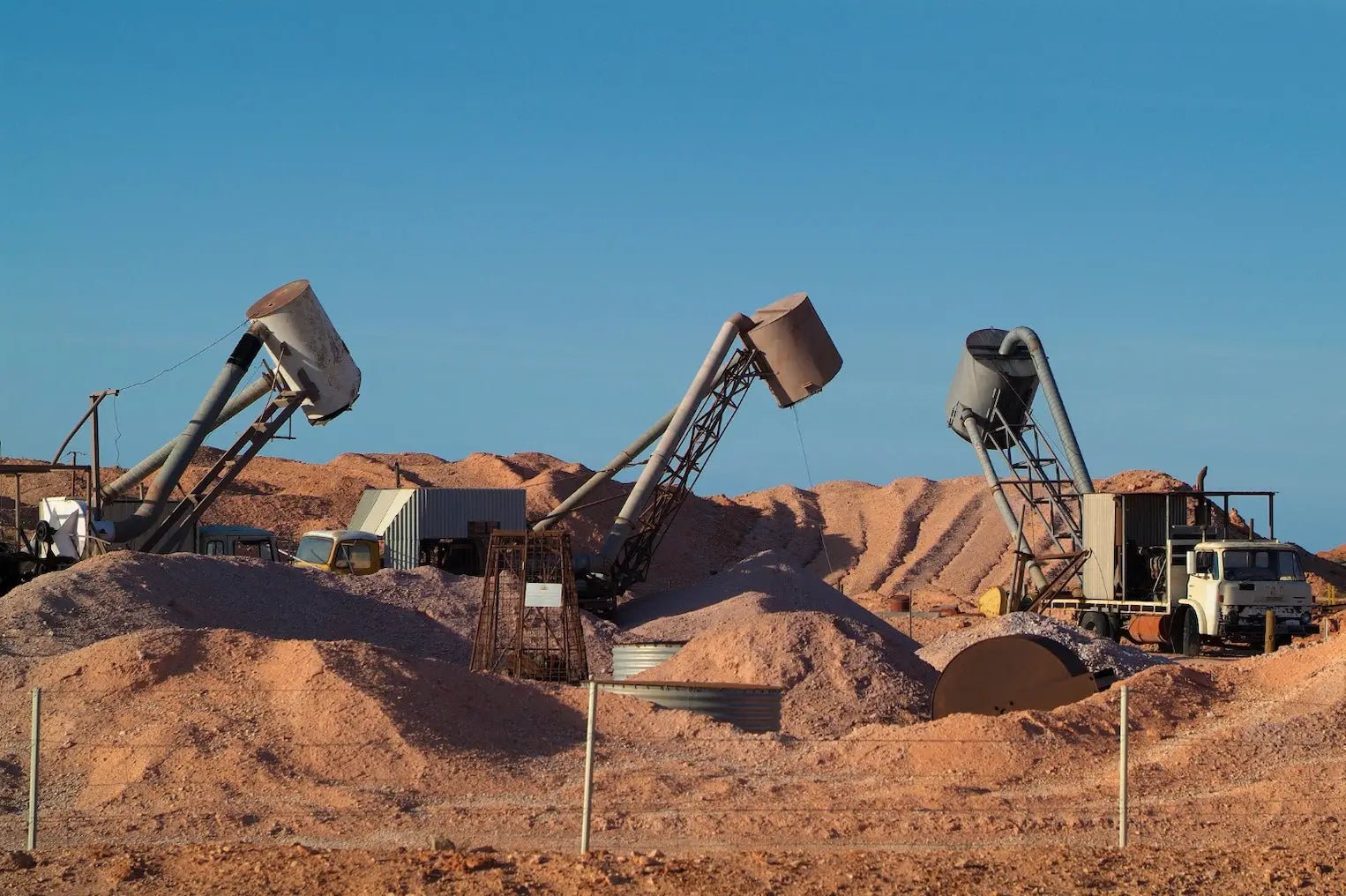
Guide to Australian Opal Mining Fields
Australia is home to numerous opal mining towns, but four have become particularly well-known: Coober Pedy, Andamooka, White Cliffs, and Lightning Ridge.
These remote areas, surrounded by rugged landscapes and characterised by challenging climate conditions, are central to the country's opal mining industry. They stand as testaments to the perseverance and optimism of those who seek precious gemstones.
Australian Opal Mining Overview
Australia produces approximately 95% of the world’s opal, making it the leading supplier for the global jewellery market. Other countries, such as Honduras, Mexico, the Czech Republic, and Brazil, also produce opals, but these often differ significantly in appearance and quality. Australian opal is renowned for its exceptional quality.
The Australian export market for opals was valued at $60 million in 1998-99, down from $69 million in 1997-98 and $85 million in 1996-97. From 2000 to 2005, production figures for uncut gems ranged between $100 million and $200 million.
Australia's opal fields are primarily located in Queensland, New South Wales, and South Australia, along the ancient ‘Great Inland Sea’ or ‘Great Artesian Basin’. White or ‘milky’ opal is found in South Australia, black opal in Lightning Ridge, NSW, and boulder opal in Queensland.
The best time to visit the opal fields is from April to September, as summer temperatures and heavy rains can make access difficult.
New South Wales (NSW) – Home of Black Opal
Lightning Ridge
Famous for its black opal, Lightning Ridge produces some of the most valuable opals in the world. The black opal is known for its dark body tone, which enhances the brilliance of its colours.
White Cliffs
Located in northwestern NSW, White Cliffs is known for producing white or crystal opal in horizontal seams. It is also famous for ‘opal pineapples,’ rare opal fossils shaped like mineral crystals.
Queensland (QLD) – Boulder Opal Country
Quilpie
Quilpie is renowned for its boulder opal, found attached to ironstone. This area is the world's largest producer of boulder opal.
Winton
Winton, in Matilda Country, is known for its diverse landscape and rich opal deposits. The region is famous for its scenic gorges and abundant wildlife.
Opalton
The Opalton Field, also known as the Fermoy Field, is one of Queensland’s largest opal deposits. Visitors can experience the challenging conditions faced by opal miners in this remote area.
Yowah
Yowah is the southernmost opal mining center in western Queensland. It is notable for its “Yowah Nuts,” siliceous ironstone nodules containing precious opal.
South Australia – The White Opal Fields
Coober Pedy
Coober Pedy is the largest producer of white opal in the world. Located in the South Australian outback, many locals live in underground dugouts to escape the extreme temperatures.
Andamooka
Andamooka’s miners work over a 52-square-kilometer area on the Arcoona plateau, using shafts, bore-holes, open-cut excavations, and small tunnels.
Mintabie
First discovered in the 1920s, Mintabie became an active opal field in 1978. It is situated 180km south of the Northern Territory border and approximately 300km north of Coober Pedy.
Lambina
Opal was first discovered at Lambina during the early 1930s. The area experienced a minor rush in the late 1980s following new discoveries by miners at Seven Waterholes diggings.
Conclusion
Australia's opal mining fields are rich with history and gemstones, offering unique insights into the country's geology and the perseverance of its miners. Whether you’re interested in black, white, or boulder opals, these fields provide a fascinating glimpse into the world of opal mining.




Leave a comment
This site is protected by hCaptcha and the hCaptcha Privacy Policy and Terms of Service apply.